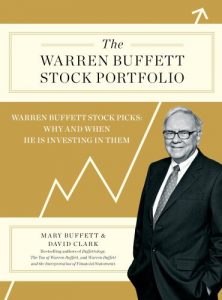Bestselling authors Mary Buffett and David Clark examine seventeen companies that Warren Buffett has bought for himself and for his holding company, Berkshire Hathaway, as durable investments and explain why these companies are once again selling at prices that offer great long-term growth prospects.
Warren Buffett has always believed that the time to buy stocks is when nobody else wants them. As we enter the fifth year of what many economists are calling the Great Recession, we find that some of the most amazing businesses—those with a durable competitive advantage—are trading at prices and price-to-earnings ratios that offer investors serious long-term moneymaking opportunities. Pessimism about the banking situation in Europe and unemployment in America have created the perfect storm to bring stock prices down and present value-oriented investors some great possibilities.
In Warren Buffett’s world, as stock prices decrease, the prospects for investment increase. Putting a number on those prospects tells Warren whether or not the stock is an attractive buy. The Warren Buffett Stock Portfolio explains how to do just that—how to value companies and conservatively estimate the kind of future return that an investment is offering at its current market price. Mary Buffett and David Clark look at stocks in Warren’s portfolio as the basis for their analysis.
After a brief history of Warren’s investment strategy, Buffett and Clark explain how to interpret a company’s per-share earnings and per-share book-value histories to quickly identify which companies have a durable competitive advantage and to project the compounding annual rate of return that an investment offers. The authors provide case studies and evaluations of seventeen companies in Warren Buffett’s portfolio.
The Warren Buffett Stock Portfolio is a valuable companion to the other books in Buffett and Clark’s successful series—Buffettology, The Buffettology Workbook, The New Buffettology, The Tao of Warren Buffett, Warren Buffett and the Interpretation of Financial Statements, Warren Buffett’s Management Secrets, and Warren Buffett and the Art of Stock Arbitrage.
Warren Buffett has always believed that the time to buy stocks is when nobody else wants them. As we enter the fifth year of what many economists are calling the Great Recession, we find that some of the most amazing businesses—those with a durable competitive advantage—are trading at prices and price-to-earnings ratios that offer investors serious long-term moneymaking opportunities. Pessimism about the banking situation in Europe and unemployment in America have created the perfect storm to bring stock prices down and present value-oriented investors some great possibilities.
In Warren Buffett’s world, as stock prices decrease, the prospects for investment increase. Putting a number on those prospects tells Warren whether or not the stock is an attractive buy. The Warren Buffett Stock Portfolio explains how to do just that—how to value companies and conservatively estimate the kind of future return that an investment is offering at its current market price. Mary Buffett and David Clark look at stocks in Warren’s portfolio as the basis for their analysis.
After a brief history of Warren’s investment strategy, Buffett and Clark explain how to interpret a company’s per-share earnings and per-share book-value histories to quickly identify which companies have a durable competitive advantage and to project the compounding annual rate of return that an investment offers. The authors provide case studies and evaluations of seventeen companies in Warren Buffett’s portfolio.
The Warren Buffett Stock Portfolio is a valuable companion to the other books in Buffett and Clark’s successful series—Buffettology, The Buffettology Workbook, The New Buffettology, The Tao of Warren Buffett, Warren Buffett and the Interpretation of Financial Statements, Warren Buffett’s Management Secrets, and Warren Buffett and the Art of Stock Arbitrage.



